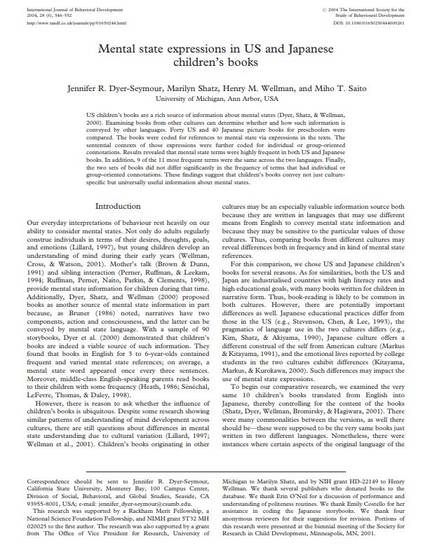
Article
Mental state expressions in US and Japanese children’s books
International Journal of Behavioral Development
(2004)
Abstract
US children’s books are a rich source of information about mental states (Dyer, Shatz, & Wellman, 2000). Examining books from other cultures can determine whether and how such information is conveyed by other languages. Forty US and 40 Japanese picture books for preschoolers were compared. The books were coded for references to mental state via expressions in the texts. The sentential contexts of those expressions were further coded for individual or group-oriented connotations. Results revealed that mental state terms were highly frequent in both US and Japanese books. In addition, 9 of the 11 most frequent terms were the same across the two languages. Finally, the two sets of books did not differ significantly in the frequency of terms that had individual or group-oriented connotations. These findings suggest that children’s books convey not just culturespecific but universally useful information about mental states.
Disciplines
Publication Date
2004
DOI
10.1080/01650250444000261
Citation Information
Jennifer R. Dyer-Seymour, Marilyn Shatz, Henry M. Wellman and Miho T. Saito. "Mental state expressions in US and Japanese children’s books" International Journal of Behavioral Development Vol. 28 Iss. 6 (2004) p. 546 - 552 Available at: http://works.bepress.com/jennifer-dyer-seymour/2/
